|
Tunguska On 30 June 1908, there was an explosion in Siberia. It was caused by something that fell from the sky in a fireball.
On 30 June 1908, there was an explosion in Siberia. It was caused by something that fell from the sky in a fireball. Some sense of scale is required to fully appreciate the magnitude of this explosion. The blast killed animals and knocked down trees over more than 800 square miles. In contrast, the atomic bomb blast at Hiroshima created a zone of total destruction of just four-and-a-half square miles. And 800 square miles was just the kill zone. The effects of the blast rattled and even broke windows more than 250 miles away. It caused atmospheric disturbances as far as Great Britain. The earth trembled all over Russia. The explosion was the greatest devastation wrought during recorded history, and the only reason it isn't a major feature in the history books is the fact that Siberia is so damn empty. Despite the biblical scale of the destruction, only one man was reported killed (when he was thrown against a tree). Had the explosion taken place over a city, it could have killed millions and would easily have been the most deadly single event in history.
The actual event began when a fireball was seen streaking through the air early on the morning of 30 June. An object was seen streaking through the sky from as far as 250 miles away. Witnesses generally described it as a fireball or a shooting star. Some said it had a fiery tail. Some said it was brighter than the sun. Whatever it was (and we'll get to that in a minute), it exploded about five miles above the ground. As already related, the shock wave was historic. A black cloud covered the area and ash fell like rain. That evening, the night sky over Europe was filled with eerie light. The question of just what fell on Tunguska that day has never been resolved, but not for lack of trying. Literally hundreds of billions of brain cells have been taxed on behalf of this subject, without a truly satisfactory answer.
The big issue surrounding any of these theories is the fact that the whatever-it-was blew up before it struck the ground. Now, it's quite likely that a meteorite or asteroid would fall apart on atmospheric entry, but an explosion isn't consistent with what you would expect. A comet is a more complicated structure, and it's a little easier to craft an explanation for why it might explode. But all of these theories remain extremely... well, theoretical. The major problem with all three of the above theories is that the explosion of a typical astronomical object would scatter tons of space-junk all over Siberia. Numerous studies and expeditions failed to find any such debris. The comet theory has been further discredited by modern atmospheric studies which show that cometary fragments evaporate far above the surface of the earth all the time, without doing any damage. The uncertainty around the cause of the explosion opened to the door to much wackier ideas. The comet and asteroid theories were questionable, but the next tier of scientific explanations were downright bizarre.
For several years, a small number of scientists toyed with the theory that a hunk of antimatter collided with the earth, causing the event. The theory was first proffered in 1930, when antimatter was still a theoretical construct and before anyone had any idea about how to check for its presence. Once technology to scan for evidence of antimatter was developed, the verdict was pretty discouraging. Background radiation levels at Tunguska were not especially consistent with the theory. Furthermore, scientists have since discovered that antimatter doesn't just float willy-nilly around the universe. In all the vastness of space, no one has ever observed antimatter occurring in nature, let alone drifting into perfectly innocent little planets in the middle of nowhere. Despite these objections, you can easily find people who cling to the notion that antimatter caused the Tunguska explosion. They can get away with it by citing the still somewhat-ambiguous properties of antimatter (which has only ever been observed in laboratory conditions).
This notion was even more preposterous than the antimatter. The main variant of the theory suggested that this tiny black hole crashed all the way through the earth and popped out the other side. Unfortunately, there were numerous problems with this theory as well. For one thing, there was no evidence to support the "exit wound" that would presumably have been caused by this event. For another, there is no widely accepted evidence or theory to support the idea that tiny black holes even exist in nature at all. Even then, assuming tiny black holes do actually exist, and assuming one of them did actually run into the earth, odds are it would have done a hell of a lot more damage than killing a few thousand reindeer. Don't forget that black holes warp space and time in a dramatic fashion. Realistically, such an impact would quite possibly rip the entire planet Earth into shreds, or suck it into timeless oblivion. Tunguska may have been a huge event when viewed from a human scale, but 800 square miles is hardly a blip from a cosmological standpoint. Given the unsatisfactory nature of the "sober" scientific explanations, you might be forgiven for considering some explanations that are, well, much less sober.
There have been plenty of different iterations of the UFO theory (without even counting fictional versions such as one featured on The X-Files). The most recent of these cropped up in the summer of 2004, when a Russian named Yuri Lavbin claimed to have found fragments of an alien craft within the blast zone. Lavbin's fragments have been the subject of some controversy. He might just have made the whole thing up. Some historians have noted that the Soviet space program crashed a few vehicles in the region during the 1960s, and they speculate that Lavbin's find might be the remnants of a documented Soviet space probe. Of course, they could also be pieces of an alien vessel, but the lab reports haven't come back yet.
If you want to get weird without leaving the confines of the earth, you can always go with the death ray theory, which argues that the Tunguska blast was caused by Nikola Tesla, a Serbian-born pioneer who made major contributions to harnessing the power of electricity. Unlike most of the above notions, the Tesla death ray notion has a few documented facts to back it up. At almost the exact time of the Tunguska blast, Tesla was experimenting with an invention known as the Tesla Coil. According to the story (which is better documented than mini-black holes, just for instance), Tesla was attempting to use his Coil to broadcast a transmission to the Arctic Circle by dumping massive amounts of electricity into the earth itself. Tesla theorized that the earth would conduct the electricity as what he called "terrestrial waves." The experiment ended when the amount of current he used caused a nearby generator to blow up amid a violent and apparently man-made lightning storm. While the timing of the experiment is interesting, and the geographical locations are suggestive, the Tesla death ray theory still lacks a coherent scientific scenario which could have caused the wanton destruction witnessed in Tunguska. There are also those pesky eyewitness reports of something falling from the sky. On the other hand, lightning is often perceived as falling from the sky when it actually leaps up from the ground. The Rotten Library has a wacky theory about the Tunguska blast as well. We theorize that you are going to hear many, many more theories about what caused the explosion before the issue is ever resolved. Tunguska has become a magnet for the adventurous imagination, among credible scientists as well as random loonies, and that isn't likely to change any time soon. On the bright side, we live in an age that admits to very few genuine mysteries. Tunguska is an honest-to-god mystery. It's not a matter of interpretation (like the Bermuda Triangle) and it can't be simply dismissed by the skeptics. It reminds us that for all we know, there is still a hell of a lot we don't know. If this mystery endures for the ages, would that really be so bad?
|
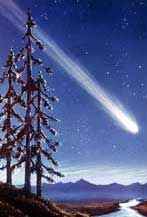 So what the fuck caused this
So what the fuck caused this 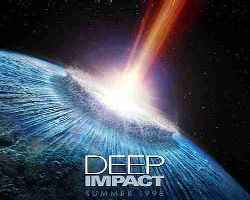 The most popular theory is that the blast was caused by a meteorite, a cometary fragment or an asteroid hitting the earth. While these may all sound pretty much like the same thing, they're not quite.
The most popular theory is that the blast was caused by a meteorite, a cometary fragment or an asteroid hitting the earth. While these may all sound pretty much like the same thing, they're not quite.  Faced with an indisputable mystery of incredible scale, many nonscientists embraced the idea that the explosion was caused by a
Faced with an indisputable mystery of incredible scale, many nonscientists embraced the idea that the explosion was caused by a 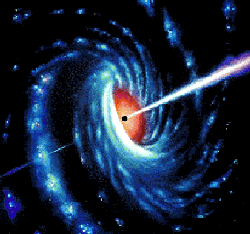 If you're going to indulge such increasingly baseless speculation, of course, why stop with the antimatter theory (which is still relatively plausible if extremely unlikely)? The next best idea anyone could come up with was even more improbable—that a tiny black hole wandering through space crashed into the earth.
If you're going to indulge such increasingly baseless speculation, of course, why stop with the antimatter theory (which is still relatively plausible if extremely unlikely)? The next best idea anyone could come up with was even more improbable—that a tiny black hole wandering through space crashed into the earth. 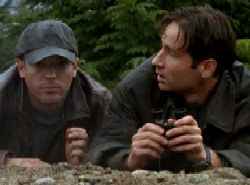 You can find plenty of long treatises on the Internet that outline various theories that the Tunguska event was caused by the explosion of an
You can find plenty of long treatises on the Internet that outline various theories that the Tunguska event was caused by the explosion of an 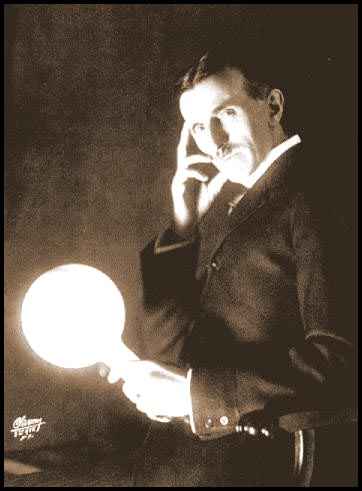 Other alien space theories are based around the observation of similarities between the Tunguska blast pattern and the blast patterns created by nuclear explosions. Under this premise, the aliens detonated a nuclear weapon over the region either by accident or deliberately. For the most part, the "on purpose" theories never clearly spell out a motive for this pre-emptive nuclear strike. As with the antimatter theory, the radiation levels at Tunguska don't especially support an alien nuke attack.
Other alien space theories are based around the observation of similarities between the Tunguska blast pattern and the blast patterns created by nuclear explosions. Under this premise, the aliens detonated a nuclear weapon over the region either by accident or deliberately. For the most part, the "on purpose" theories never clearly spell out a motive for this pre-emptive nuclear strike. As with the antimatter theory, the radiation levels at Tunguska don't especially support an alien nuke attack.